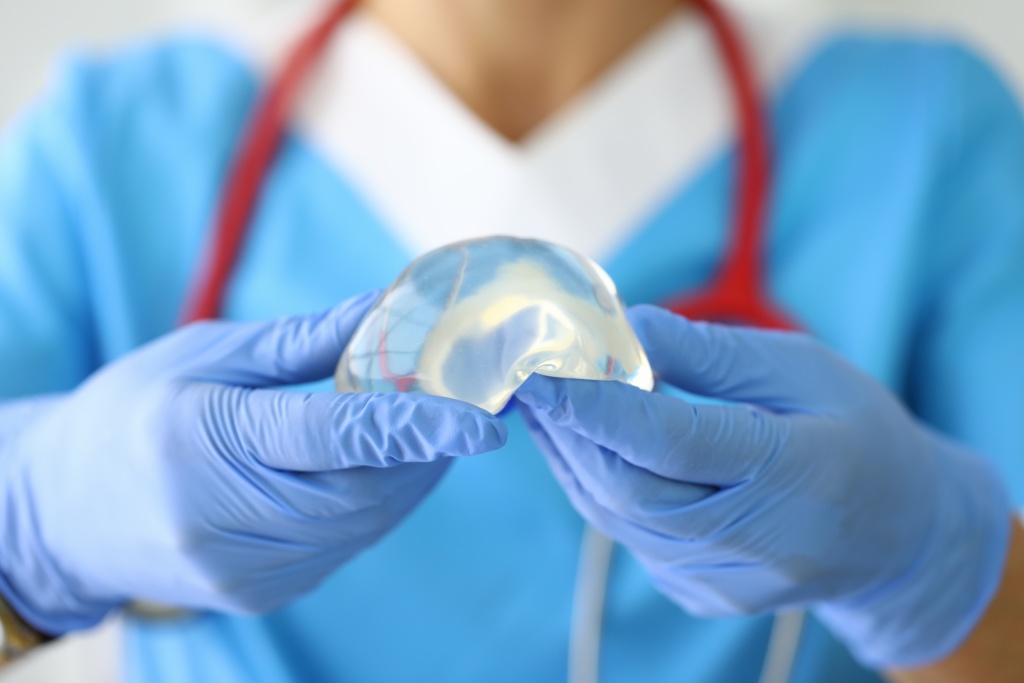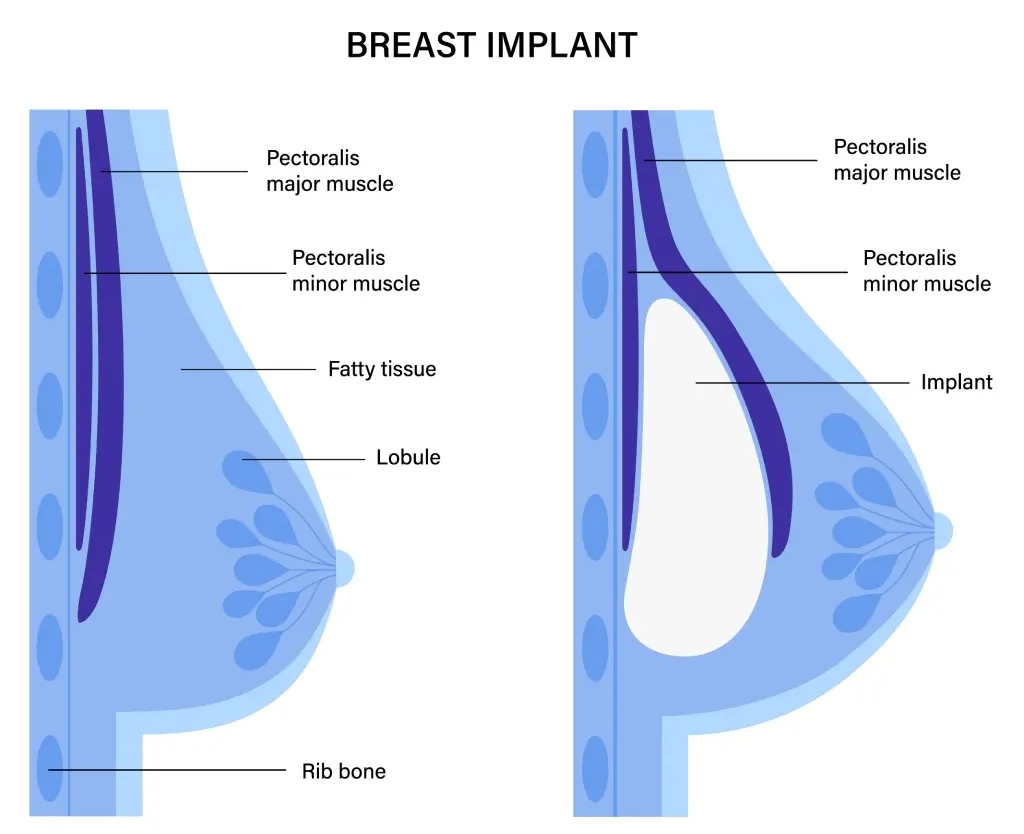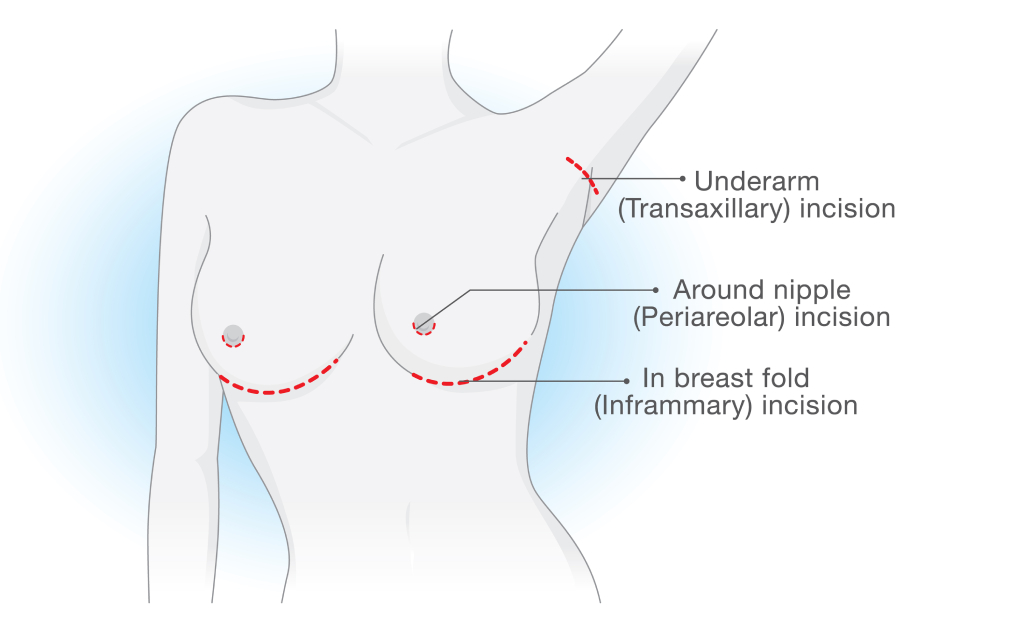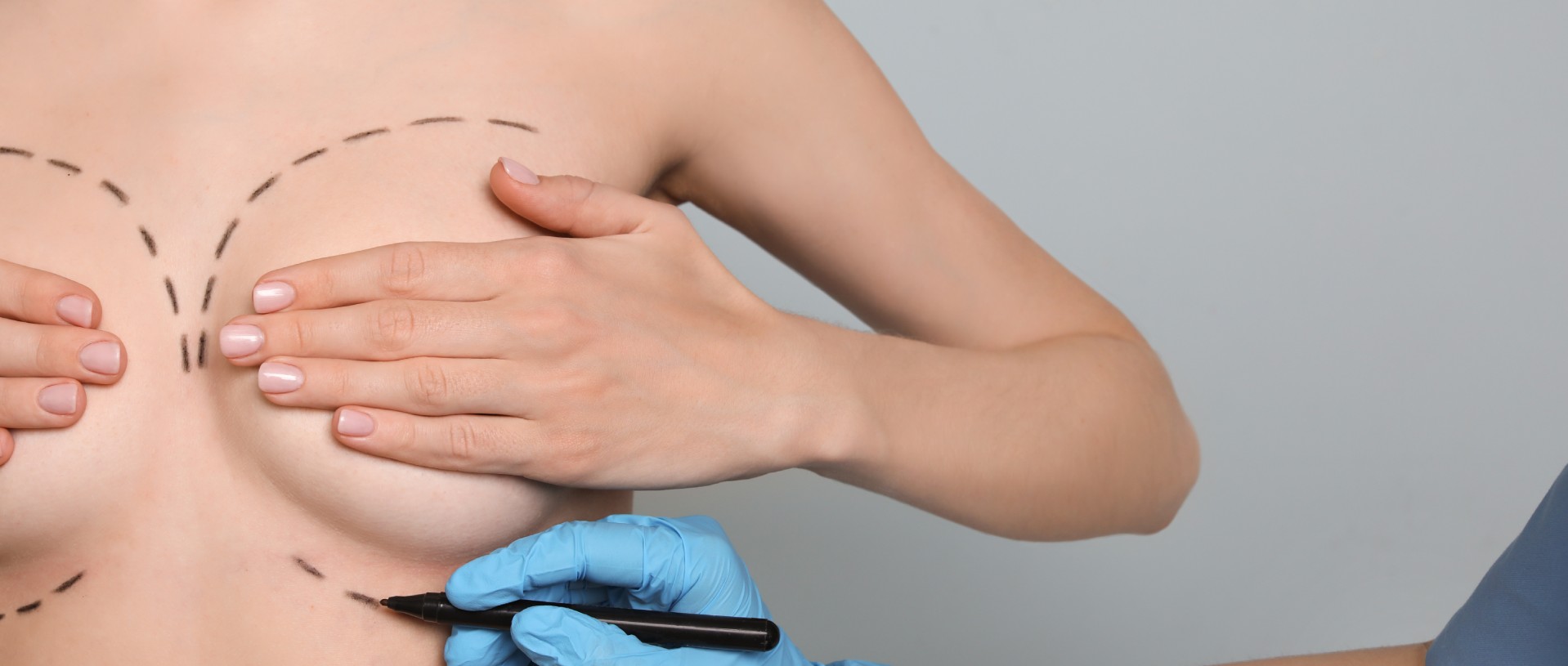Breast Augmentation with Saline Implants
People who are interested in breast augmentation are increasingly choosing saline breast implants for their safety profile, natural feel, and lower risk of capsular contracture. Dr. Azouz is a well-known plastic surgeon in the Dallas area specializing in breast augmentation, having placed thousands of saline implants, including those manufactured by Allergan, Mentor, and Ideal (now Bimini Health). There are various choices for saline implants including, those that are sound, high profile, moderate profile, and anatomic.
 Saline breast implants: What are they?
Saline breast implants: What are they?
The silicone shells of saline breast implants are filled with sterile saline solution. Saline implants are placed empty during surgery and subsequently filled to the appropriate size, in contrast to silicone implants, which are pre-filled. This allows for customization of the amount of saline placed in the implant to provide a tailored approach.

Who is a candidate for saline breast implants?
People wishing to have a corrective treatment, and who want breast larger breasts are good candidates for saline breast implants. Fat grafting can be combined with the placement of saline implants. The placement of implants can allow for a significant increase in the size of the breasts without the need for several surgeries as may be necessary with fat grafting.
Benefits of Saline Implants
Saline breast implants have a safety profile associated with less significant capsular contracture, a higher safety profile, and do not require MRI imaging to be performed. While implants are safe and leaks are not common, if a saline breast implant were to leak, the saline would be easily processed by the body and would not cause any adverse effects. Unlike other types of implants, it is also easier to detect problems with saline implants, as they quickly reduce in volume during a leak. Saline implants also allow for smaller incisions, and thus more camouflaged scars.
What is the scarring for saline breast implant surgery?
Many types of incisions can be used for a boob job with saline implants. The type of incision used during breast implant surgery can affect how noticeable the scars are.

| Types of incision | Location | Scarring |
|---|---|---|
| Inframammary Incision | Made in the armpit, with a tunnel leading from there to the breast where the implant is put. | Usually leaves a well-hidden scar below the breast. The visibility of the scar may vary depending on breast size and personal healing. |
| Periareolar Incision | Made at the areola's edge | The scar becomes camouflages in the skin's natural transition between the areola and surrounding skin tone. |
| Transaxillary Incision | Made in the armpit, with a tunnel leading from there to the breast where the implant is put. | The scar is in the armpit crease; it is not noticeable on the breast itself. If this method is not well-hidden, it could lead to a scar that is more visible. |
During the consultation, it’s important to go over incision alternatives in detail with a board-certified plastic surgeon like Dr. Azouz in order to select a technique that best suits your unique needs and preferences while minimizing visible scarring.
How are saline breast implants placed?
During your physical examination, Dallas plastic surgeon Dr. Azouz will assess your individual anatomy and cosmetic goals to determine whether it is best if the implant is placed subglandularly (below the breast tissue but above the chest muscle) or submuscularly (beneath the chest muscle).
Board-certified plastic surgeon Dr. Azouz will carefully create a space for the breast implant above or below the pectoralis major muscle. When the implant is inserted submuscularly, a part of the muscle may detach to make place. The implants are deflated, and because saline implants are initially empty, volume and size can be changed for better breast symmetry.
Dr. Azouz then fills the saline implants with sterile saline solution to the appropriate volume. This allows Dr. Azouz to adjust the size during surgery, resulting in ideal symmetry. Before sealing the implant, Dr. Azouz checks it for any anomalies and makes the necessary corrections. The self-sealing valve or patch is then carefully applied to the implants to seal them against leaks and maintain their integrity.
Before and After Saline Implants

This young female complained of a “pigeon chest,” also known as a pectus carinatum deformity. She underwent subpectoral placement of 375cc saline implants with Dr. Solomon Azouz. This also helped to increase breast volume and enhance upper pole fullness for a more balanced silhouette.

This young female complained of a “pigeon chest,” also known as a pectus carinatum deformity. She underwent subpectoral placement of 375cc saline implants with Dr. Solomon Azouz. This also helped to increase breast volume and enhance upper pole fullness for a more balanced silhouette.

This young female complained of a “pigeon chest,” also known as a pectus carinatum deformity. She underwent subpectoral placement of 375cc saline implants with Dr. Solomon Azouz. This also helped to increase breast volume and enhance upper pole fullness for a more balanced silhouette.

This young female complained of a “pigeon chest,” also known as a pectus carinatum deformity. She underwent subpectoral placement of 375cc saline implants with Dr. Solomon Azouz. This also helped to increase breast volume and enhance upper pole fullness for a more balanced silhouette.
Saline Breast Implants
View More-
Can You Substitute a Breast Lift for Implants?
A breast lift might be better than implants for women whose breasts have lost volume or begun
Continue reading -
Explore Breast Implants Options and Breast Augmentation Surgery
If you are considering breast augmentation surgery (placement of breast implants), it is recommended to start exploring
Continue reading -
Breast Augmentation: Which breast implant is best for me?
According to The Aesthetic Society, Breast Augmentation is one of the top breast plastic surgery procedures for
Continue reading
How long do breast implants last?
Breast implants do not have a predetermined lifespan or expiration date. However, they normally persist between 10 and 20 years, with some women keeping them for longer. It’s crucial to remember that this is only an average; the exact longevity of your implants will be determined by a variety of factors, including the company that manufactures the breast implant.
| Natrelle (Allergan) | Mentor | Ideal Implant (Bimini Health) |
|---|---|---|
| The ConfidencePlus Warranty, a warranty program offered by Natrelle, gives coverage for up to 10 years in the case of primary augmentation patients and up to 20 years in the case of reconstruction patients. Financial aid for surgery, lifelong product replacement, and coverage for certain issues are all included in the guarantee. Although they note that this timetable can vary depending on individual circumstances, Natrelle recommends that its implants be updated every 10 to 15 years. | The MentorPromise Protection Plan, a warranty program offered by Mentor, gives coverage for a maximum of 10 years for patients undergoing main. augmentation and up to 20 years for those undergoing reconstruction. Financial aid for surgery, lifelong product replacement, and coverage for certain issues are all included in the guarantee. Mentor suggests replacing its implants every 10 to 15 years, though this schedule may change depending on certain circumstances. | Ideal Implant guarantees its saline-filled implants for a limited lifetime. For the duration of the patient's life, the guarantee provides a free product replacement for any deflated implant brought on by a manufacturing flaw. While Ideal Implant does not have precise recommendations for how often to replace their implants, they do advise routine examinations by a plastic surgeon to guarantee the implants are functioning properly. |
Saline breast implants offer a safe and versatile option for those considering breast augmentation. Board-certified plastic surgeon Dr. Azouz in Dallas specializes in this procedure, providing expert guidance and personalized care to help individuals achieve their desired results. If you’re considering saline breast implants, call the office at (972) 702-8888 or contact us online to schedule a consultation with Dr. Azouz to explore the possibilities of enhancing your breasts.
Frequently Asked Questions
The FDA has approved saline breast implants for use in breast augmentation and reconstruction surgeries, and they are regarded as safe. They should be discussed with Dr. Azouz due to the potential risks and complications that come with them, just like with any medical device.
Although they typically don't, there is a small chance that they could have an effect on the flow or supply of milk. Decisions about placement and incision can affect this.
Based on available data, saline breast implants do not appear to raise the risk of breast cancer. Self-examinations and routine mammograms are still crucial. Textured breast implants have been linked with an increased risk of BIA-ALCL, and have since been recalled.
Yes, saline implants can be felt, particularly in comparison to natural breast tissue. They often feel stronger and more like a water balloon than real breasts, which are softer.
If a saline implant ruptures, the saline solution leaks out, causing the breast to deflate significantly, usually within 24 hours. This is easily identified and necessitates the removal or replacement of the implant.
While saline implants do not impair the quality of mammography images, they may necessitate repeated mammogram views to fully visualize the breast tissue beneath the implant. This ensures that no irregularities are overlooked.
